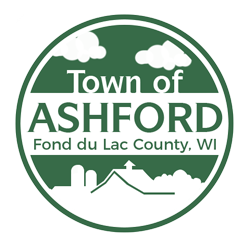A plane is de-iced at Mitchell International Airport. De-icing waste
can help in producing methane used for energy production.
Close
Sun seekers and swimmers put off by slimy, foul-smelling cladophora
algae covering Lake Michigan beaches and rocky shorelines in summer
have a pair of new allies in the ongoing battle with the nuisance
plant: Daniel Zitomer and hungry microbes.
Where some see a putrid eyesore, Zitomer sees a sweet opportunity to
make energy.
Allow bacteria and other microbes known as archaea to digest the
stringy algae in enclosed tanks and the end product is methane, said
Zitomer, an associate professor of engineering and director of the
Water Quality Center at Marquette University.
The same goes for animal droppings at the Milwaukee County Zoo, as
well as waste from food processing, candy making or even distilling
liquor. Each is rich in organic carbon compounds, and they, too, could
yield methane if digested by a diverse set of microbes.
Then, Zitomer says, burn the methane to generate electricity to lessen
demand for energy from coal or natural-gas-fired power plants and
reduce emissions of carbon dioxide and other gases from the power
plants that could contribute to global warming and climate change.
The tanks and microbes he wants to fill with cladophora and organic
wastes from the community are at the South Shore Wastewater Treatment
Plant in Oak Creek.
The Milwaukee Metropolitan Sewerage District uses bacteria and archaea
to digest human feces and other sewage solids removed during the
beginning of the treatment process at the Jones Island and South Shore
plants. The blend is mixed and heated in four separate tanks with
capacities of 3 million gallons each and two smaller tanks with half
that capacity at South Shore.
Nearly a decade ago, Zitomer identified a seasonal waste – aircraft
de-icing fluids from Mitchell International Airport – that could be
poured into the digesters to boost methane production.
Christmas will come early again this year for billions of bacteria and
other microbes in the below-ground tanks at the South Shore plant. The
winter’s first tanker full of de-icing waste – propylene glycol and
water – arrived last week.
The addition of glycol to the tanks has the same effect as tossing
sugar-loaded candy to children: It sets off a feeding frenzy among
bacteria and archaea, Zitomer said.
Glycol molecules are broken apart by bacteria, then quickly fermented
into acids, which are converted to methane by the archaea. Both groups
of microbes working in the tanks thrive in warm, oxygen-free
environments.
Since 2000, the airport has shipped between 250,000 and 300,000
gallons of the waste each winter to the South Shore plant. Tankers
arrived more frequently last winter, however, and the treatment plant
received a record 500,000 gallons.
In October, a separate partnership between InSinkErator, the
Racine-based maker of food waste grinders, and Outpost Natural Foods
on S. Kinnickinnic Ave. started sending small volumes of ground
vegetables to the digesters at South Shore.
In 2007, the total energy value of methane produced in the digesters
was estimated at $1.9 million, MMSD chemical engineer Jeff Schilling
said. That dollar figure equals the money MMSD saved by reducing
energy purchases for the plant. No estimate was available on the value
of methane provided by adding the de-icing waste, he said.
The district still needed to buy $1 million worth of electricity for
its South Shore plant last year, Schilling said. Electricity primarily
operates pumps in the treatment system and lighting at the plant.
MMSD also bought nearly $675,000 worth of natural gas for South Shore
in 2007. Natural gas is used to heat buildings there and is burned in
engines that run large air compressors for one step in the sewage
treatment process.
Methane created in the digesters is burned to run some of the air
compressors and to generate electricity.
Creating more methane would further reduce MMSD energy costs in future
years, according to Peter Topczewski, MMSD’s water quality protection
manager.
“There is plenty of capacity in our digesters for more waste to make
more methane,” Topczewski said.
The district’s commission has agreed to spend up to $150,000 for
Zitomer’s next search for wastes that can further boost methane yields
in the tanks.
We Energies has contributed $157,894 to the project along with $28,000
from Veolia Water Services, the private company hired to operate MMSD
treatment plants, deep tunnels, the Milorganite factory and regional
collector sewers. Marquette has committed $30,000.
Beginning in January, Zitomer will identify as many as 15 types of
waste to be tested for potential yields of methane and for
contaminants that might harm South Shore’s microbes. The four top
options will be fed to digester microbes in small, laboratory-size
containers to confirm the earlier methane analysis before any of the
wastes are poured into the tanks at South Shore for testing.
